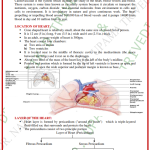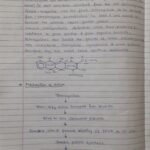Robert Koch – First time isolated in pure culture.
• Louis pasture- Prepare Attenuated vaccine
• This genus contains number of species, which are found in air,
soil, dust, water etc.
Most important species:
B.anthracis, – Anthrax
B.cereus, – Food poision in human
B.piliformis-Tyzzer’s Disease
B.licheniformis- Sporodic abortion
B.mycoides
B.subtilis,
B.megaterium,
Synonym
➢ Malignant Pustule,
➢ Malignant Edema,
➢ Woolsorters’ Disease,
◼ Anthrax is a severe zoonotic disease that affect all
mammalian species
◼ The disease occur world wise
◼ Ruminant are highly susceptible
◼ Pig and Horses are moderately susceptible
◼ Carnivores are comparatively resistant
◼ Birds are totally resistant
– BHI- Flat Dry, Opaque just like
(Ground glass like appearance)
Gelatine stab- Invert fir tree type growth
➢ It produce exotoxin.
➢ which is protein in nature
• Factor I: (Oedema factor),
• Factor II: (Protective antigen)
• Factor III: (lethal factor)
Production of the anthrax toxin is mediated by a
temperature-sensitive plasmid termed as pX01.
◼ Per acute-
➢ Sudden death without any symptom
➢ Splenomegaly
➢ Body cavity filled with uncloatted blood
❑ Acute-
➢ Increase body temp (108 F).
➢ Anorexia
➢ Blood oozing from natural orifice
(Nostrile, Anus, Mouth)
Horse:
◼ Is always acute.
◼ When infection is by ingestion there is septicemia with enteritis &
colic with the passage of bloody faeces
◼ When infection is by insect transmission, hot painful, edematous,
subcutaneous swellings appear at the throat, lower neck, floor of
the thorax and abdomen, prepuce & mammary gland
◼ There is high fever and severe depression & dyspnoea due to
swelling of the throat or colic due to intestinal irritation. The
course is usually 48-96 hours. Rapid pulse & respiration
◼ Hyperaemic or cyanotic mucous membrane










